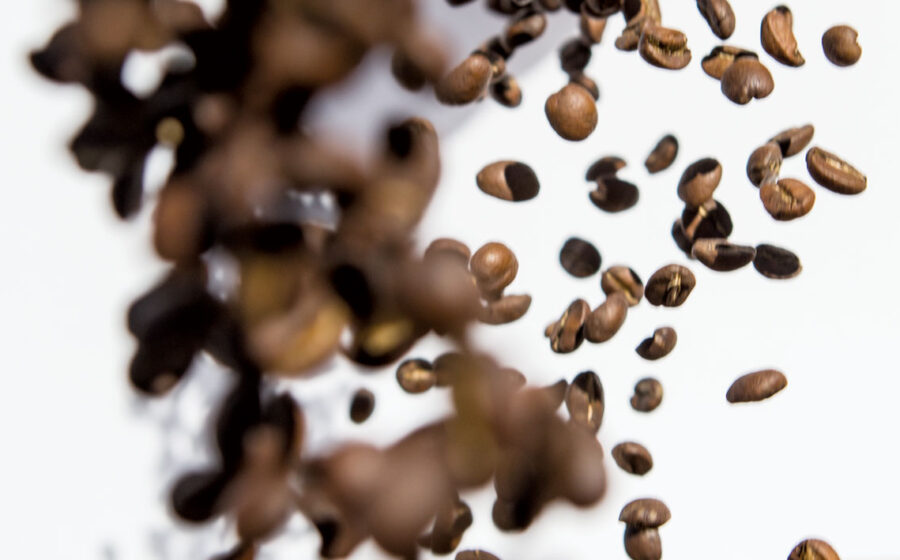[W]hen we were laying out our green-buying vision for Blueprint Coffee, we placed huge emphasis on our dedication to form mutually beneficial relationships. A major way to do this was to expose the coffee producer and importer to our customers. That way, when customers connected with a coffee, they were able to gain insight into why the coffee was delicious. Our role was simply that of a proactive middle person in the chain from farmer to customer.
This approach to sourcing lends itself to single-origin coffees, and we specifically made a commitment not to blend coffee until we had a good reason. I saw blends not as bad coffees but as confusing formulas complicating the transparency from seed to cup. There have been times when blending could have moved aging coffee, but that would have contradicted our transparency goals.
After four or five months in business, though, I sensed a gaping hole in our selections for wholesale customers. While our team was excited to dial in a different single-origin espresso every day, we had few wholesale customers willing to. The requests for an espresso blend started to multiply. It was profound for me when I realized that consistency, both in profile and price, was the key quality for a majority of the coffee being bought by coffee bars. As a barista, I had viewed consistency as my task in the coffee chain. Now, with my income partially dependent on fulfilling the vision and expectations other baristas and shop owners, I realized that consistency was a value I could partially provide as a coffee wholesaler. Through active sourcing and careful roasting, we could deliver quality and profile at a consistent price. Even still, we did not feel ready or willing to create an espresso blend.
While our team was excited to dial in a different single-origin espresso every day, we had few wholesale customers willing to. The requests for an espresso blend started to multiply.
So, we created Penrose, a series of single-origin coffees that fit a particular flavor profile, one that works well by itself and in milk, and is consistent and easy to dial in on a day-to-day basis.
We’re on our seventh rendition of Penrose. While some versions have thrilled half of our customer base, the other half has not been happy. Some versions have pleased pretty much everyone but ourselves. So we keep trudging forward, trying to find balanced coffees that are easy to dial in, taste great alone, and blend perfectly with milk.
Along this journey, we have tasted tons of espresso from other roasters, both single origins and blends. Hometown by Sweet Bloom Coffee and Sweet Shop by Square Mile Coffee Roasters stand out to me as espresso experiences that caused me to doubt our reluctance to blend. More and more, I started to believe that a great house espresso could have a complexity and diversity of flavor through blending that we weren’t able to provide with our single-origin versions of Penrose. While we could coax a single-origin espresso to have a soft, full body, with big sweetness, we weren’t getting the complexity of flavors we wanted. When we found a coffee with this complexity, we were often at a loss for body or ease of dial-in. It was becoming obvious that other roasters used blends to overcome these same challenges.
In late spring of 2015, we booked the coffee for our seventh version of Penrose. It is a beautiful washed coffee from Sereno, Guatemala. It has tons of sweetness with balanced acidity. About a month later, a natural-processed Honduran caught the attention of our green buyer, Andrew Timko. Andrew was also tempted to blend, so the two of us put together some options using the natural Honduran and another washed Guatemalan. The results of this test blend were so positive that Andrew started the daunting task of encouraging our team to give blending a try on Penrose v7.
What followed was a number of sample roast blends using this natural Honduran coffee with the Sereno in different ratios. We were finally able to achieve espressos that were extremely sweet and balanced, full-bodied and complex.
We’ve never felt it was implicit to our identity to only offer single-origin coffee, we just needed to discover our own authentic reason to blend.
So, we will be blending for the first time with Penrose v7. We’ve never felt it was implicit to our identity to only offer single-origin coffee, we just needed to discover our own authentic reason to blend. With this decision comes a plethora of logistical challenges. We have to now work blending into our production. Also, buying coffee for blends is extremely challenging. It is not easy to reserve the correct amount of coffee until you have really decided upon your blend ratio, so buying seasonally becomes even more difficult.
In the future, we will likely source the main component for Penrose with our same target in mind—a versatile house espresso. As we secure that coffee, we will discover what coffees complement and enliven it, but that we can also seasonally and transparently source. We’ll only continue to blend if we feel it brings more quality to the cup.
As we’ve grown as a company, we see more opportunities like Penrose, especially in the restaurant and grocery sectors, where a consistently priced coffee with a targeted profile could be just as valuable to a customer as a unique single-origin coffee. We will be challenged to keep the supply chain and producers highlighted. We also know we’ll encounter preconceived notions that blends are not seasonal or intentional, but by continuing to be transparent with our relationships, we believe they’ll continue to be mutually beneficial.
—Mike Marquard is a co-founder of Blueprint Coffee in Saint Louis.
















